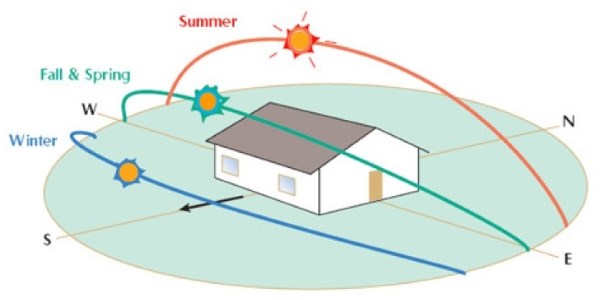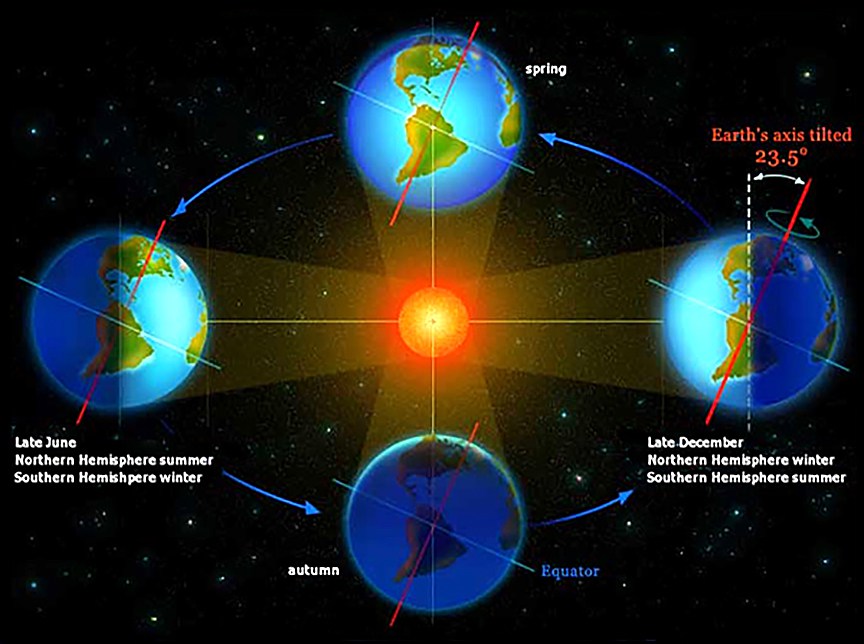Warm in winter, cool in summer
Blacktail Solar Homes have been carefully placed so the wide part of the home is facing due South, thereby maximizing the amount of winter sunlight and heat that the homes receive. The interior living spaces are designed so the kitchen and living room will be light and comfortable throughout the winter. And in the summer the shade from the roof will keep out the sun that felt so good in the winter.
What Causes The Seasonal Change
Imagine this thought experiment - place near the edge on a round table, a world globe, properly tilted with an imaginary pencil through the center pointing to a corner of the room. Then place a bright light representing the sun at the center of the table at about the same height above the table as the globe. By moving the globe around the edge of the table while keeping the imaginary pencil always pointed to the same corner, you would be able to see the changing pattern of light and shadow on the various parts of the globe as this model of our Earth makes the annual trip around the "Sun".
A person standing on the ground in Dillon Montana is unlikely to be thinking about why weather is cold in the winter and hot in the summer and how the lovely image from NOAA that follows shows the answer. But that same person designing a low input home in Dillon Montana would need to be very aware of the seasonal variation in how the Sun's rays strike the Earth, and how to take advantage of that variation.
The following diagram shows the apparent path of the sun and how that looks from a building located near 45° N., the latitude of Dillon, Mt.

A diagram of the sun’s path on the winter solstice and summer solstice. Image Courtesy of US DOE
A blog by Astro Bob explains some things about the Earth's annual rotation around the Sun.
The northern hemisphere tilts toward the sun in summer, lifting it high in the sky from our perspective. Long days and more intense heating from the nearly-overhead sun make it feel like a sauna out there. Six months later, when the hemisphere is oriented away from the sun, short days make us shiver.
There is quite a lot more interesting information in the blog post. One thing he did not mention - it is this perspective of irregularity in the orientation of the Earth to the Sun as it completes the annual journey is what give us our seasons.
The following image may help to understand why that happens. Note the red line always points in the same direction.

The apparent motion of the sun around the sky is really a reflection of Earth’s yearly cycle around the sun. The seesaw-like up-and-down movement of the sun from season to season is caused by Earth’s titled axis and our planet’s changing orientation to the sun during the year. It and not Earth’s varying distance from the sun causes the seasons. Image Credit: Thomas G. Andrews / NOAA